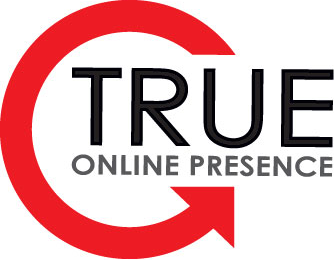In the bustling world of e-commerce, standing out from the competition is crucial, and one of the most effective tools at your disposal is Google Shopping. This powerful platform can drive traffic and sales if leveraged correctly, with campaign segmentation and the use of custom labels being two strategies that can significantly enhance your advertising efforts. Let’s delve into why these strategies are important and how you can implement them to maximize your Google Shopping campaigns.
The Power of Campaign Segmentation
Segmenting your campaigns allows you to tailor your advertising strategy to different parts of your audience and product catalog, offering precise control over how and to whom your ads are shown. This precision leads to better ad performance, optimized spending, and ultimately, higher conversion rates. Here’s why segmentation is so crucial:- Improved Budget Allocation: By segmenting campaigns, you can allocate more budget to high-performing products and reduce spending on those that do not perform as well. This ensures that your advertising dollars are spent more efficiently, maximizing return on investment (ROI).
- Enhanced Bid Strategies: Different products and market segments may perform better with different bid strategies. Segmentation allows you to apply the most effective bidding strategy for each group, whether it’s maximizing clicks for high-turnover items or focusing on profitability for high-margin goods.
- Targeted Promotions: Segmentation enables more targeted promotions. For instance, you might want to push a specific product line during a particular season or sale. By segmenting these products into their own campaign, you can customize your messaging and bidding to suit the promotional period.
- Better A/B Testing: By segmenting your campaigns, you can compare performance across different groups under similar conditions. This is invaluable for A/B testing different aspects of your marketing strategy, such as ad copy, images, and pricing strategies, to find what works best for each segment.
- Increased Granularity in Reporting: With segmented campaigns, your reporting becomes more detailed, allowing for deeper insights into what is working and what isn’t. This granularity helps you make more informed decisions about future marketing strategies and product placements.
Leveraging Custom Labels for Granular Control
Custom labels in Google Shopping are your best friend when it comes to categorizing products beyond the standard Google product categories. These labels can be used to tag products based on any criteria you choose, such as seasonality, price range, profit margin, or even promotional relevance. Here’s how custom labels can transform your Google Shopping campaigns:- Past Sales Performance: Ever heard of the 80/20 rule, also known as Pareto’s Principle? It is likely that a small percentage of your items is attributing for most of your sales. If this is true, why spread your advertising budget evenly across all items? Grouping products based on their past sales performance—such as “best-sellers””—can guide your bidding strategies and promotional efforts. Products with a proven sales record might get more aggressive bids and broader visibility, while efforts can still be made to optimize listings or improve offers for slower-moving items.
- Seasonality: Assign custom labels to products based on seasonal relevance, such as “summer” or “back-to-school”. This allows you to push specific products at times when they are more likely to sell.
- Price Tiers: Use custom labels to group products by price range, such as “under $50” or “over $100”. This segmentation can help you adjust your bids based on the potential profit margin, which can vary significantly between lower-priced and higher-priced items.
- Promotional Items: For products that are on sale or part of a special promotion, custom labels like “sale” or “clearance” can help you manage these items more aggressively to ensure they get additional exposure.
- Inventory Levels: Use custom labels to monitor inventory levels, such as “low stock” or “overstocked.” This allows for dynamic campaign adjustments to either push products that need to move quickly due to high stock levels or pull back on advertising spend for products that are close to selling out, optimizing both sales and inventory management.
Implementing These Strategies
To implement campaign segmentation and custom labels effectively, follow these steps:
- Define Your Goals: Start by defining what you want to achieve with your Google Shopping ads, whether it’s increasing sales, clearing inventory, or promoting new products.
- Analyze Your Product Catalog: Look at your product catalog and identify characteristics that could be used for segmentation. Consider aspects like profitability, sales velocity, or any unique product attributes.
- Create Custom Labels: Within your product feed, assign custom labels to your products based on the characteristics identified. This might require some data manipulation or adjustments in how you manage your inventory data. You may consider using a Supplemental feed to map custom labels.
- Set Up Segmented Campaigns: Create new campaigns in Google Ads for each of your segments. Apply appropriate bidding strategies and budgets according to the characteristics of each segment.
- Monitor and Optimize: Regularly review the performance of your segments. Be prepared to adjust your strategies, such as reallocating budget or tweaking bids, based on the data you collect.
FINAL WORD
Segmenting your campaigns and using custom labels are powerful tactics that allow for a more refined approach to advertising with Google Shopping. By implementing these strategies, you can ensure that your ads are not only more relevant but also more effective, driving better results for your e-commerce business. Start refining your approach today, and watch your performance improve! I hope this gives you direction in your Google PPC Marketing. If you have any questions on online marketing you can reach out through the Make Each Click Count Facebook Group or schedule a free strategy session at www.trueonlinepresence.com. Until next time, Happy Marketing!ABOUT THE AUTHOR
 Andy Splichal is the founder and managing partner of True Online Presence, author of the Make Each Click Count book series, host of the Make Each Click Count podcast, founder of Make Each Click Count University and certified online marketing strategist with twenty plus years of experience helping companies increase their online presence and profitable revenues.
Andy Splichal is the founder and managing partner of True Online Presence, author of the Make Each Click Count book series, host of the Make Each Click Count podcast, founder of Make Each Click Count University and certified online marketing strategist with twenty plus years of experience helping companies increase their online presence and profitable revenues.
He has been called the foremost expert in eCommerce Marketing Growth Strategies. He was named to Best of Los Angeles Awards’ Most Fascinating 100 List in both 2020 and 2021. To find more information on Andy Splichal, visit www.trueonlinepresence.com or read The Full Story on his website or his blog, blog.trueonlinepresence.com.

